Business
Top Ten Generative AI Applications for Business Owners
Published
2 years agoon

Holding a massive potential for revolutionizing many businesses, generative AI is a field that’s rapidly gaining traction and popularity. This technology can help entrepreneurs generate various types of content, including images, audio, text, and many others. The simplicity and ease of creating high-quality content in seconds make it a valuable tool for many industries.
What is Generative AI?
A type of artificial intelligence, generative AI can create content, chat support, graphic designs, synthetic data, or deepfakes. To do all these, the technology learns patterns from existing data to generate new and unique results. It is capable of producing highly realistic content similar to human creativity.
Thanks to its many capabilities, it has become a valuable tool for many businesses and industries, such as entertainment, gaming, and product design. It can help your business with text, image, audio, video generation, and 3D modeling.
Here are the top ten generative AI applications businesses can learn from:
1. Better Product Design
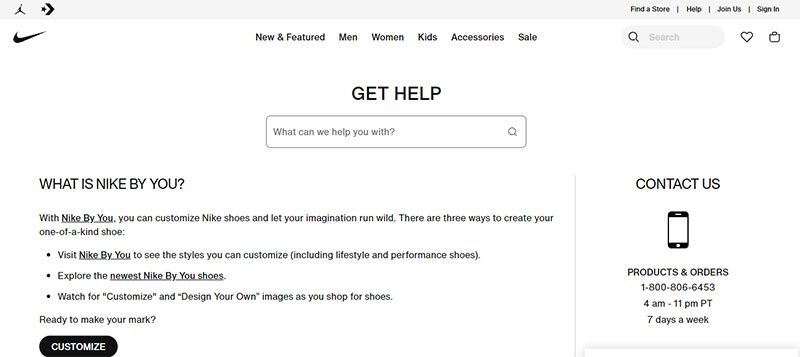
Businesses can use generative AI to design their products and services. You can use the technology to generate new product ideas, create new prototypes, and test your existing ones. This will help you introduce your new products to the market faster and develop products with a higher chance of success.
An excellent example of this is Nike which uses generative AI for its product designs. The sporting retail giant uses Nike By You, formerly known as NikeID. This allows its customers to design their own customized shoes, making their experience even better.
2. Improved Marketing Efforts
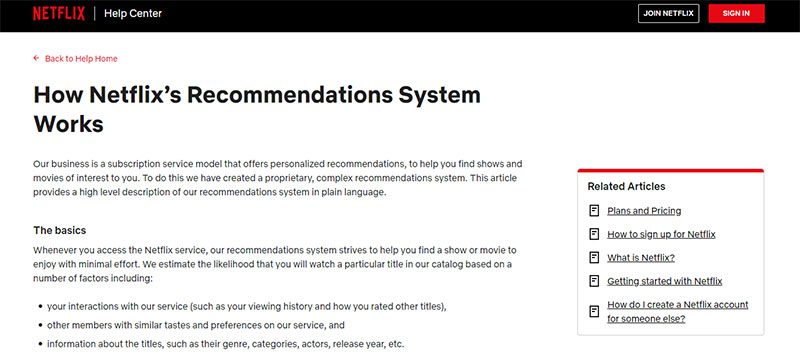
You can boost your advertising and marketing efforts using generative AI. You can use it to create a more personalized marketing campaign, generate leads, and qualify your prospects. With it, you can reach your target market more efficiently, thus generating more leads and sales.
If you want to see generative AI in action, try looking at Netflix‘s marketing efforts. The streaming company uses a tool to recommend
TV shows and movies that it thinks you would like.
3. Efficient Customer Service

Providing good customer service is not enough anymore. In this fiercely competitive world, consumers have become more discerning, the very reason you need to deliver the best. Generative AI can help you answer customer queries, resolve issues, and more.
Amazon is one example of a company that uses generative AI for its customer service tasks. Amazon Lex chatbots can answer customer questions and provide support. This can help improve customer satisfaction while reducing the cost of customer support.
4. High-Quality Content Creation
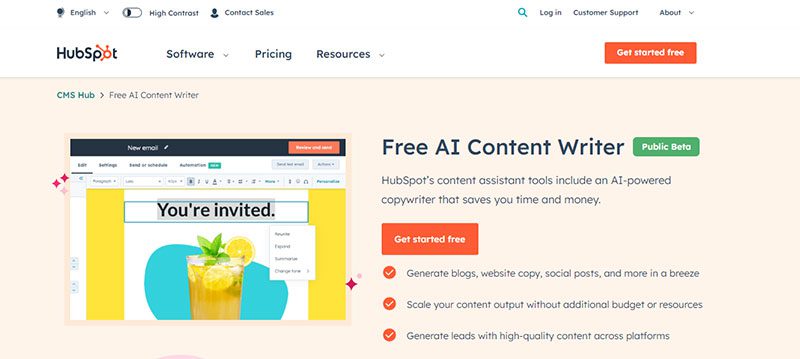
Every business should have a content marketing strategy in place if it wants to get in front of its audiences. Generative AI can help create content for marketing, sales, and customer service. You can use it to write engaging blog posts, email marketing campaigns, and social media posts, to name a few.
A great example is HubSpot which uses generative AI for content generation. Its HubSpot AI Content Writer understands the content HubSpot’s target audience is likely to read, then generate relevant content.
5. Boost Sales
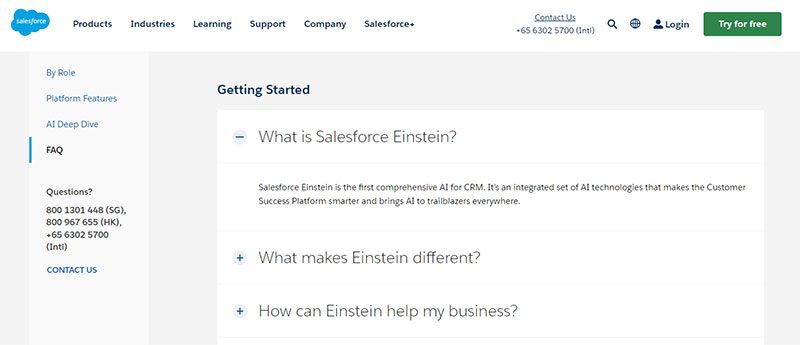
Generative AI can help business owners improve their sales. It does this by helping you close deals, cross-sell products, and upsell customers, among others. This will boost your sales, increase revenues, and improve customer satisfaction.
Salesforce is a company that uses generative AI for its sales. The company uses a tool they call Salesforce Einstein to help their sales representatives close deals. This tool understands the customers’ needs and then generates tailor-made sales pitches.
6. Cybersecurity and Fraud Detection
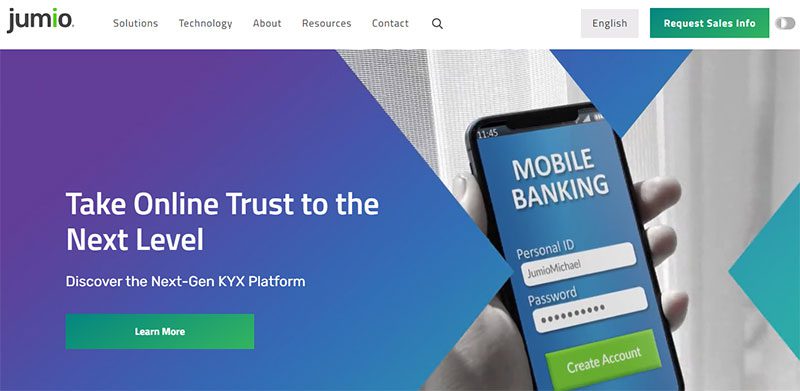
You can use generative AI to help your business with cybersecurity and fraud detection efforts. The technology can create synthetic data that can be used to train machine learning models for cybersecurity and fraud detection. This will significantly help you reduce your company’s risk of fraud and cyberattacks.
Excellent examples of businesses that use AI for fraud detection and cybersecurity are Jumio and Armorblox. Jumio gets help verifying customer identities and detecting fraudulent transactions. Armorblox gets help analyzing email communications to identify and protect against phishing and payroll fraud.
7. Artificial Creativity
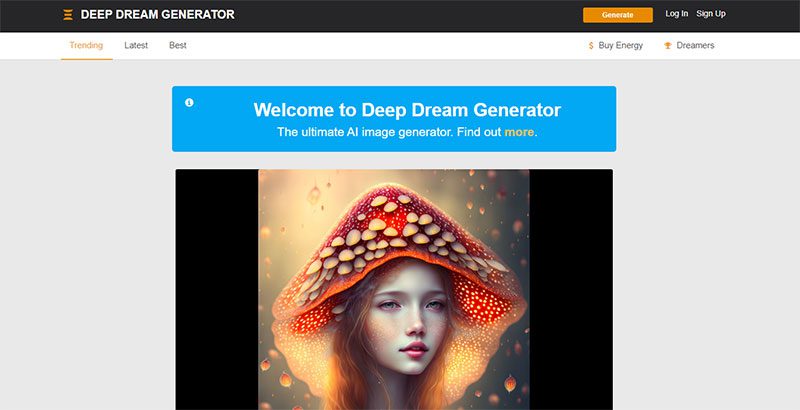
Businesses can also use generative AI to create art, music, and literature similar to human-created works. This is what’s known as artificial creativity. You can use AI to generate visual content for your marketing campaigns and strategies.
Below are a few examples of artificial creativity tools that you can explore:
ImageNet Painter – an AI tool that uses deep learning to craft paintings based on your images.
DeepDream Generator – a Google AI research project that also generates visually appealing images that often resemble abstract art.
Magenta – another Google AI project that uses deep learning to create music.
8. Product Testing
You can use generative AI to test your products before they are manufactured. It can generate virtual prototypes, identify potential defects, and provide personalized product testing. Siemens, Boeing, and Nike are just some of the companies that use generative AI for this exact purpose.
These companies’ use of AI helps them reduce their cost and time spent on product development. This also ensures the safety of their products and services, such as in the case of Boeing.
9. Drug Discovery
Companies can benefit from generative AI through its improvement in drug discovery. Brands such as Merck, Johnson & Johnson, and Google use AI tools to generate new drug candidates, predict efficacy and personalize drug treatment.
When AI analyzes large datasets of existing drugs to identify new compounds that have the potential to be effective, it analyzes clinical trials to ensure that new drugs are effective. It also helps ensure patients get the most effective treatment for their needs.
10. Efficient Logistics
With generative AI, you can optimize your company’s supply chains, help manage inventory and track shipments. It can help you reduce your costs, improve efficiency, and deliver your products to your customers on time.
Amazon, Walmart, and FedEx use generative AI for many business processes. Not only is the cost reduced, but it also helps with the tracking and monitoring of shipments.
Conclusion
Generative AI is changing the business landscape as we find many new applications being developed. We can expect the technology to advance and find ourselves immersed in its innovations sooner than we anticipate.
You may like
Business
What’s the Best Design Agency in Austin for Businesses in 2026?
Published
23 hours agoon
December 24, 2025
Famous for its vibrant food scene, booming tech hub, and live music, Austin, Texas, also holds some of the best design agencies in the nation. For the coming year, you might want to work with the following agencies to boost your business:
Penji

Known for its unlimited graphic design services, Penji tops this list of the best agencies in Austin. Its key services include branding visuals, infographics, social media graphics, custom illustrations, UI and UX design, and more. You can send requests for more than 120 design categories, all for a flat monthly rate. And the best part is its unlimited revisions feature, allowing you to get the exact designs you need without paying extra.
Pushstart Creative

A multidisciplinary design agency, Pushstart Creative specializes in product and industrial design, user experience, research, and strategy. It has worked across various industries, most notably consumer and commercial IoT, consumer electronics, sports, and health and fitness.
Frank & Victor

Reflecting Austin’s creative spirit, Frank & Victor helps businesses resonate more deeply with their audiences. It promises to create branding and identity systems, strategic logo designs, UI/UX designs, and more, with premium quality designs and attention to detail.
Big Gorilla

With a focus on branding and identity design, web design and development, and marketing strategy, Big Gorilla is a highly recommended creative design agency for businesses in Austin. It also offers photography, video, art direction, packaging design, and a wide range of marketing and communications services.
Fahrenheit Marketing

Founded in 2008, Fahrenheit Marketing is a full-service agency that offers both creative design and marketing strategy. Proudly based in Austin, Texas, it offers web development, UX/UI design, SEO, PPC, and ecommerce services. In addition to these, they sell products from Offline Order Importer, HubSpot, Klaviyo, SharpSpring, and many others.
Business
Top 10 Video Marketing Agencies You Must Check Out in 2026
Published
6 days agoon
December 19, 2025
If you’ve been following the latest marketing trends, you would know that video marketing is popular. Factors like lower costs, the availability of video platforms, and the rise of social media influencers helped change how consumers interact with video content. Read on to learn the best video marketing agency to help you leverage the power of video.
1. Vireo Video
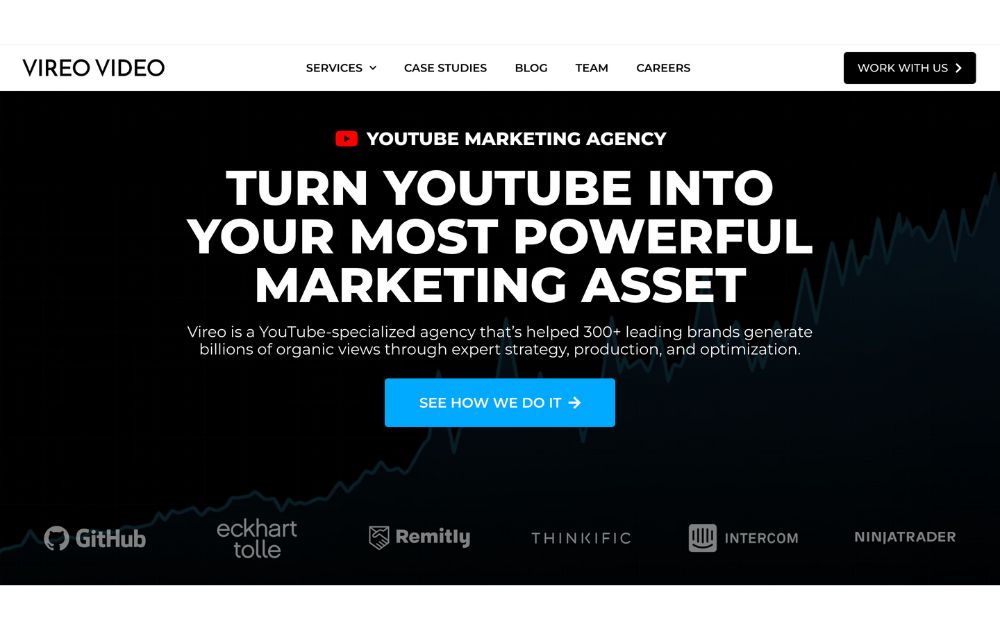
If you need an expert in Youtube marketing, be sure to check the features of Vireo Video. The platform specializes in Youtube marketing and offers various video-related services, such as Youtube content strategy, SEO, and advertising.
Vireo Video is trusted by brands and influencers like bestselling author Eckhart Tolle. Vireo assisted in the optimization of his videos and helped grow his YouTube channel. As a result, his channel has 250 million views and 1.6 million new subscribers.
Key Services:
- Influencer marketing
- Video optimization
- Targeted YouTube advertising placements
- Strategy development
2. NinjaPromo
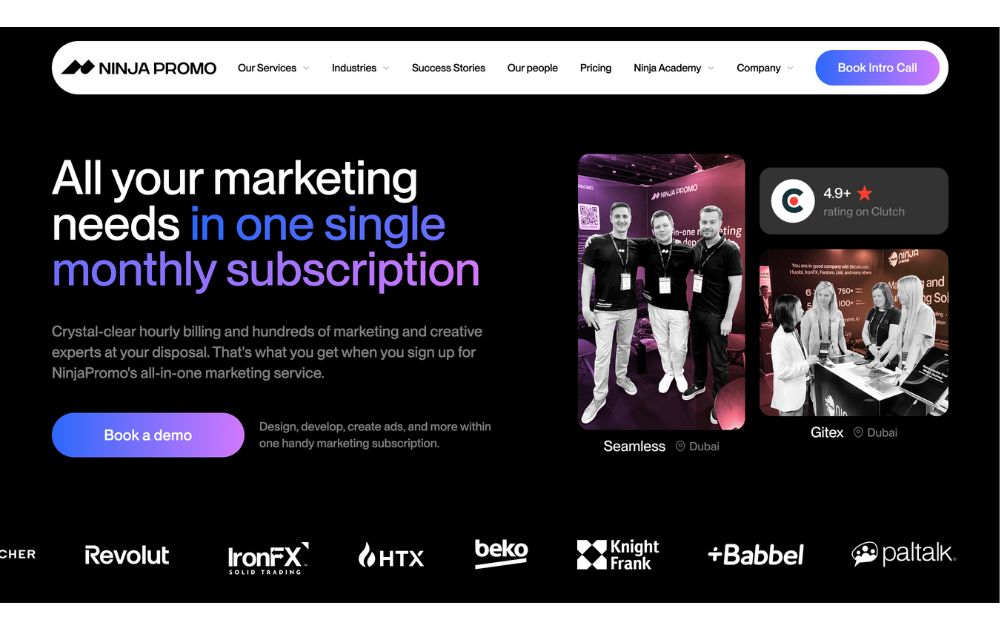
Video marketing is one of the many services offered by the digital marketing agency NinjaPromo. If you’re looking for a perfect partner to assist you in reaching your desired audience quickly, NinjaPromo is one of the best agencies to work with. The company can help you create creative, engaging, and practical videos to promote your brand and increase your online presence.
Key Services:
- Video Production
- Consultation
- SEO optimization
- Explainer videos
- Event and product videos
- Tutorials
3. Moburst
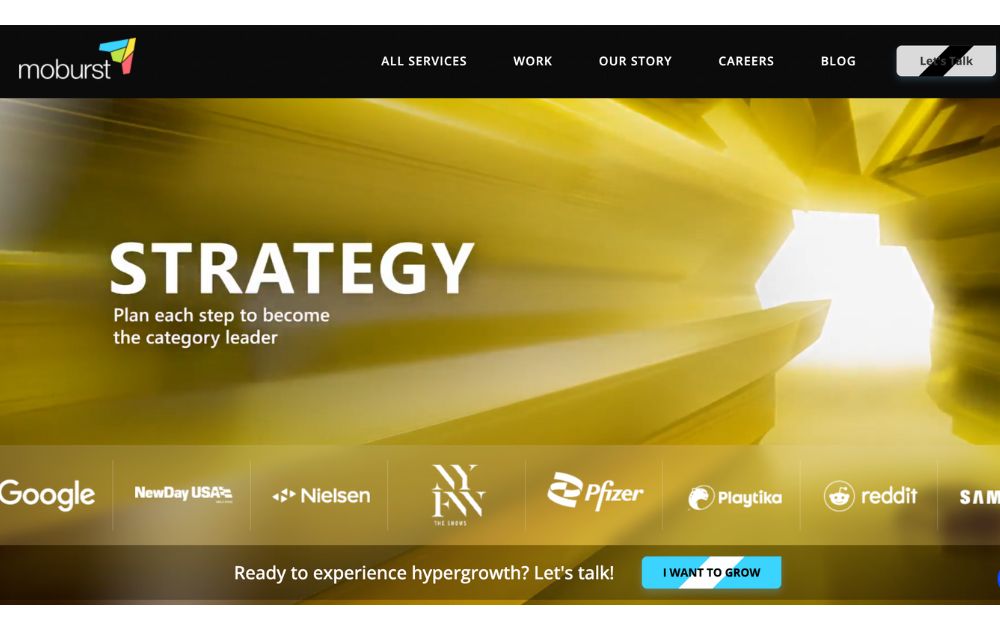
Moburst is a mobile and digital marketing agency that specializes in helping businesses grow their mobile apps. They offer different services to enable enterprises to improve their mobile app performance and increase user engagement. One of its clients is Samsung, which Moburst helped achieve +1,400% growth from downloads to social.
Key Services:
- App Store Optimization
- Video production
- Mobile User Acquisition
- Mobile App Analytics
- Mobile App Design and Development
- Mobile App Retargeting
4. Voy Media
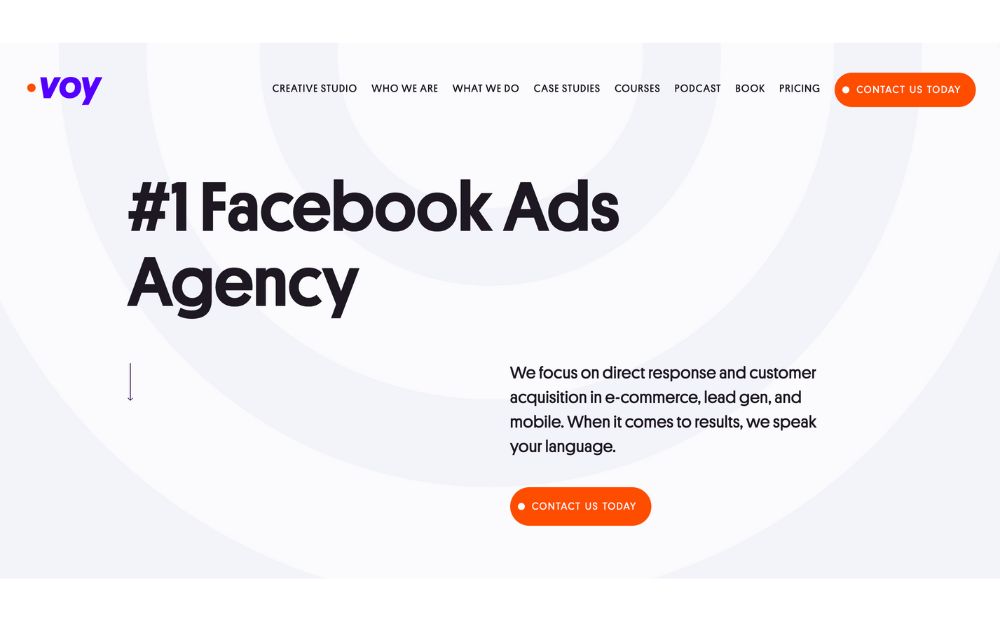
Trusted by big brands like Lacoste, Voy Media is a full-service agency offering various marketing and creative services. Their services are designed to help businesses grow their brand. Likewise, the agency helps them generate leads and increase conversions through social media platforms. Voy Media also ensures its clients receive the necessary support by assigning a dedicated account manager.
Key Services:
- Video editing and production
- Product and lifestyle photography
- Graphic design and illustration
- Full studio production with talent and script
5. Pop Video
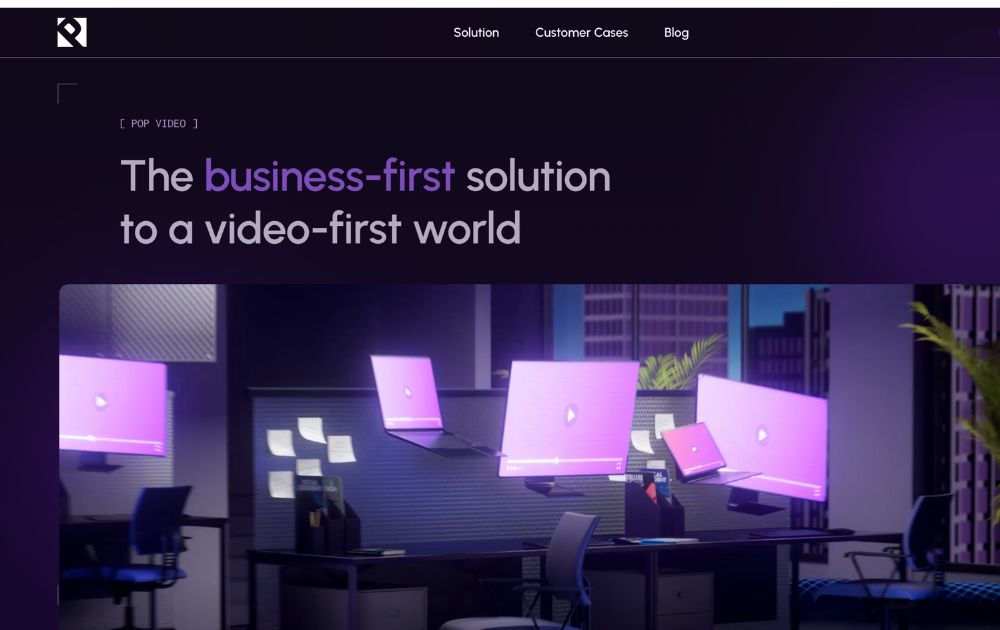
Pop Video was established in 2010 in Houston, Texas. They describe themselves as a business-first solution for a video-first world. Pop Video has a team of visual content creators with a specialization in video production and visual content marketing.
The agency has worked with various clients across different industries, including healthcare, technology, retail, and finance. Some of its notable clients include Microsoft, Adidas, and Coca-Cola.
In addition to its core video production services, Pop Video provides consulting and training services to help businesses develop their video marketing strategies and produce their video content in-house.
Key Services:
- Video Marketing
- Video production
- Animation
- Content creation
- Social media optimization
6. Epipheo
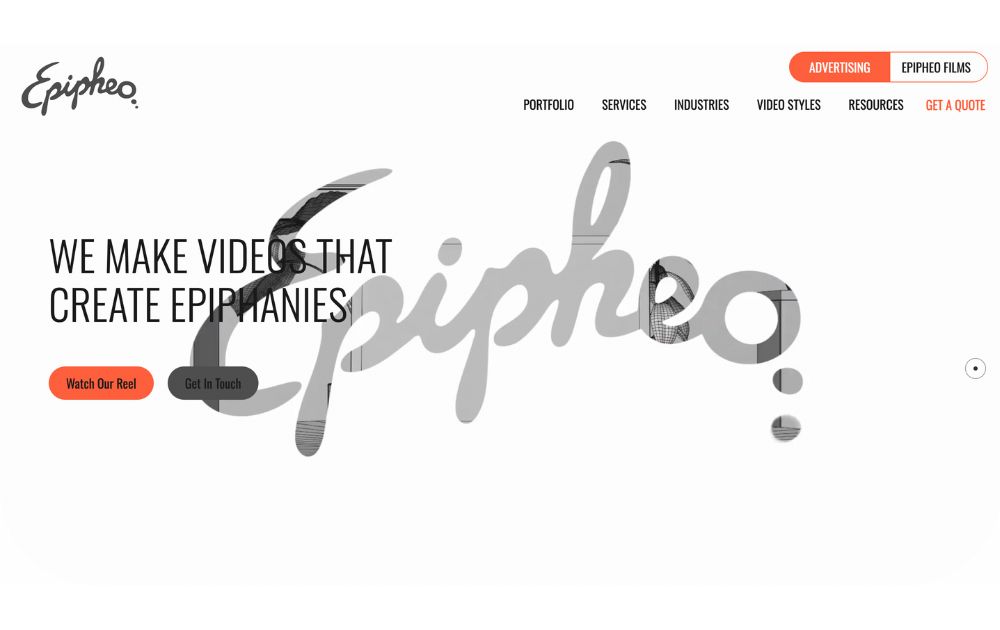
If you need help with educational videos, explore the services of Epipheo. Epipheo is a video marketing agency that creates animated explainer videos and other visual content to assist companies, organizations, and individuals in connecting with their audience effectively.
Key Services:
- Social video ads
- Storytelling testimonial videos
- Animated explainer videos
- Live action videos
- Strategy and consulting
7. Early Light Media
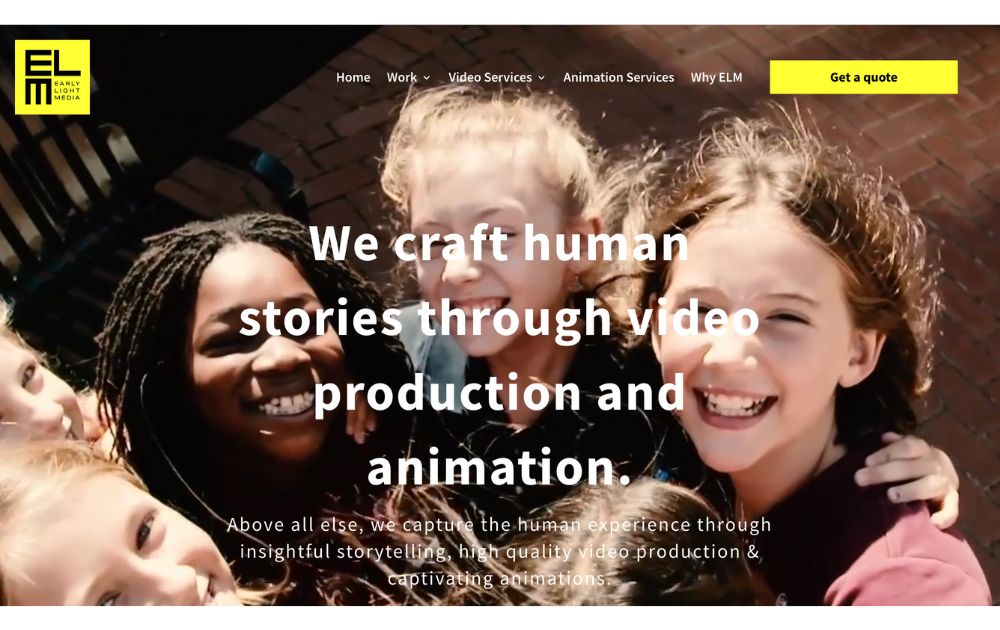
Early Light Video is a full-service video production company that creates high-quality video content for businesses, nonprofits, and individuals. The agency is known for delivering top-notch video content that meets its clients’ needs. It was founded in 2013 by a team of Emmy Award-winning creative directors, with offices in Baltimore and Washington, DC.
Key Services:
- Video production
- Post-production
- Animation
- Voice-over casting
- Music Licensing
8. Indigo Productions
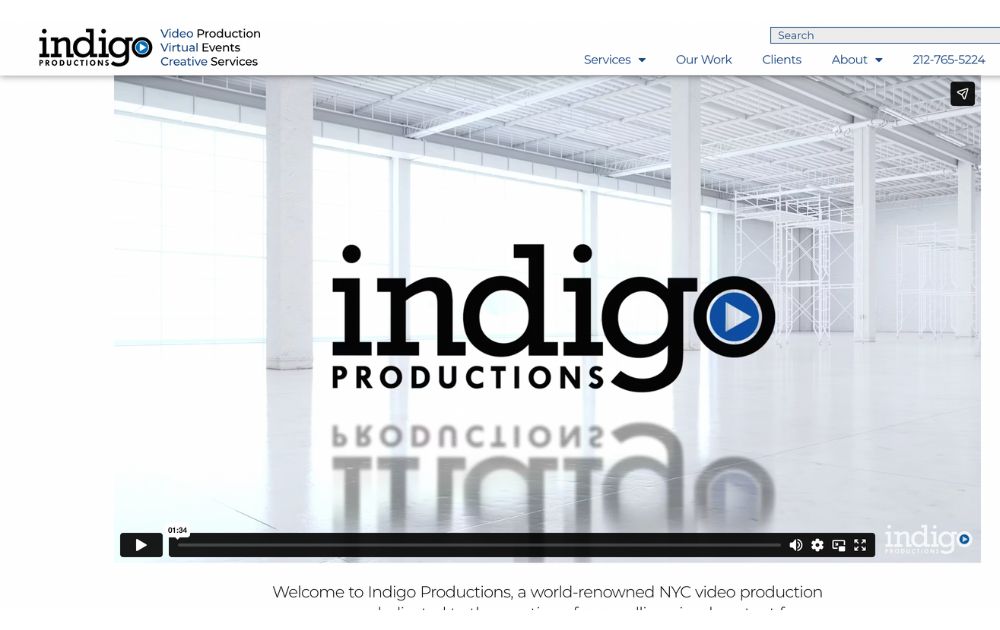
Indigo Productions is a full-service video production company based in New York City. They specialize in creating high-quality videos for corporate clients, advertising agencies, and individuals. Their team of scriptwriters, directors, producers, hair and make-up artists, and location scouts will handle all the logistics.
Key Services:
- Promo videos
- Web commercials
- Music videos
- Movie trailers
- Documentaries
9. LAI Video
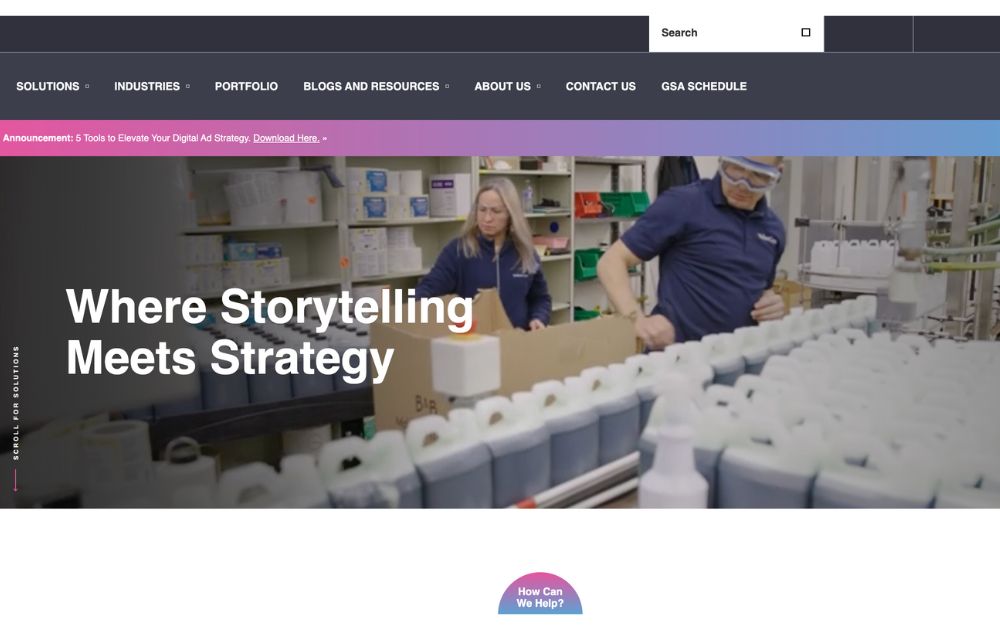
LAI Video is a Washington, DC-based boutique video production company specializing in creating visual stories that inspire and engage audiences. The company was established in 2013 and has become a leading video production agency in the DC metro area.
LAI Video has worked with various clients, including National Geographic, The World Bank, Georgetown University, and The Smithsonian Institution. Their skilled team of filmmakers, animators, editors, and producers works closely with clients to ensure that each video project meets their specific goals and objectives.
Key Services:
- Corporate videos and commercials
- Video communication campaigns
- Branding
- Video animation
- Marketing storytelling
10. SparkHouse
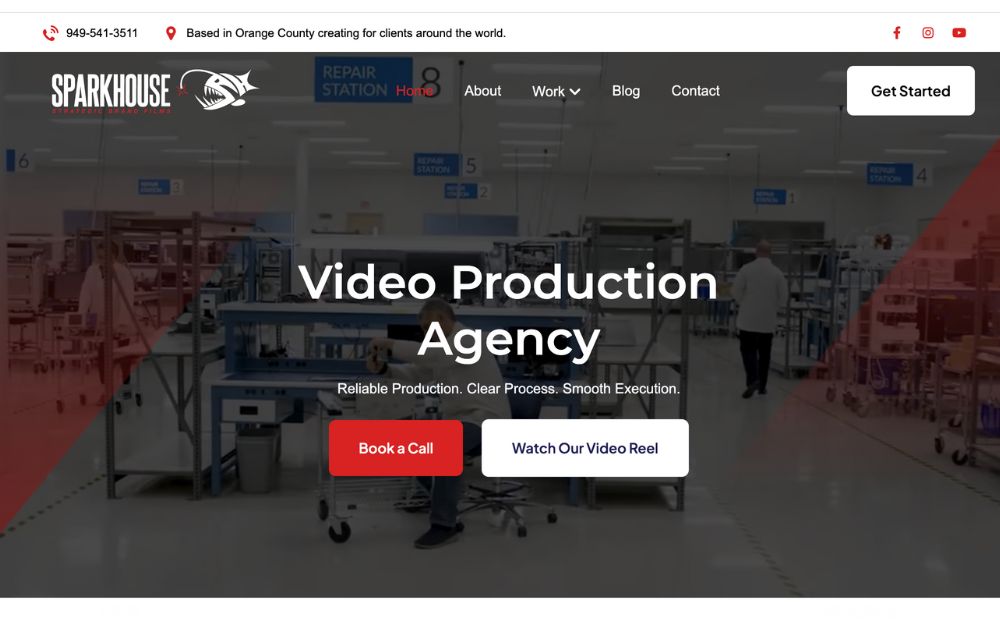
SparkHouse is a video production company based in Minneapolis, Minnesota, specializing in creating high-quality video content for businesses and organizations. The company was founded in 2013 by filmmakers and storytellers passionate about creating visually stunning and emotionally compelling videos.
SparkHouse has worked with various clients, including Target, 3M, Best Buy, and General Mills. Their talented filmmakers, animators, writers, and producers work closely with clients to ensure each video project is customized to their unique needs and objectives.
Key Services:
- Brand Videos
- Corporate Videos
- Animation
- Event Videos
- Social Media Videos
- Documentary Films
Which Types of Videos Do You Get from a Video Marketing Agency?
A video marketing agency typically provides various video types, each with a specific purpose and target audience. Below are the common types of videos you can request from a video marketing agency.
- Brand videos
- Explainer videos
- Corporate videos
- Testimonial videos
- Social media videos
- Live stream videos
- Case studies
- Reviews
- Tutorials
Conclusion
Video marketing is essential for businesses looking to engage their audience, build brand awareness, and drive conversions. That said, the competition will only continue to grow, making working with a reliable video marketing agency more critical than ever.
Featured Image Credit: Photo by fauxels from Pexels

TLDR: Penji is unlimited graphic design for a flat fee; Colab is digital transformation focused on brand storytelling; Jacob Tyler is a full-service brand strategy powerhouse; Micro1 is AI-powered engineering and tech design.
Did you know that California’s creative economy is worth more than $500 billion to the state’s economy? That’s a lot of creative minds at work!
The search for the best design agency in Los Angeles can be quite daunting. After all, 1 in 6 people in L.A. work in a creative field. It’s no surprise there are thousands of candidates that would be an ideal extension of your dream team.
If your business requires a rebrand or continuous graphic design efforts you can rely upon day in and day out, then finding the right design agency will help your business thrive. You need more than just a creator, you need someone to bring your vision to life.
To ease your research, here are the top four contenders as the best graphic design agency in Los Angeles.
1. Penji

The future of design has arrived. Seeking a design service upon demand? Penji is your new graphic design service that acts as an extension of your team.
No hidden costs, no missed deadlines and For a monthly flat-fee subscription service, you will have access to the top 2% of designers in the world with little more than a submission request for us to take it from there!
This is perfect for marketers or agencies seeking cohesive quality over hiring needs.
Pros:
- Unlimited Revisions: We keep refining until you are 100% happy.
- Flat Monthly Rate: No surprise fees or hourly billing.
- Fast Turnaround: Most drafts are delivered within 24-48 hours.
- Vetted Talent: We hire the top 2% of designers, so you don’t have to vet freelancers.
Cons:
- Subscription-based: This model is best for those with ongoing design needs rather than one-off projects.
2. Colab

When it comes to a design as a service partner with digital transformation as its focus, Colab is the place to be.
A location-based agency that takes a data-led transformational, story-driven approach to seamless UX, Colab is where brands/agencies should go when seeking to merge strategy creation/implementation through execution from start to finish—especially with websites that merge look/functionality with success.
Pros:
- Strategic Focus: They rely heavily on data to drive design decisions.
- Local Expertise: A deep understanding of the LA market.
- Full-Service: They handle everything from the backend code to the frontend visuals.
Cons:
- Higher Cost: As a traditional agency, their project fees will be significantly higher than a subscription model.
- Timeline: Large-scale digital transformation projects can take months to complete.
3. Jacob Tyler
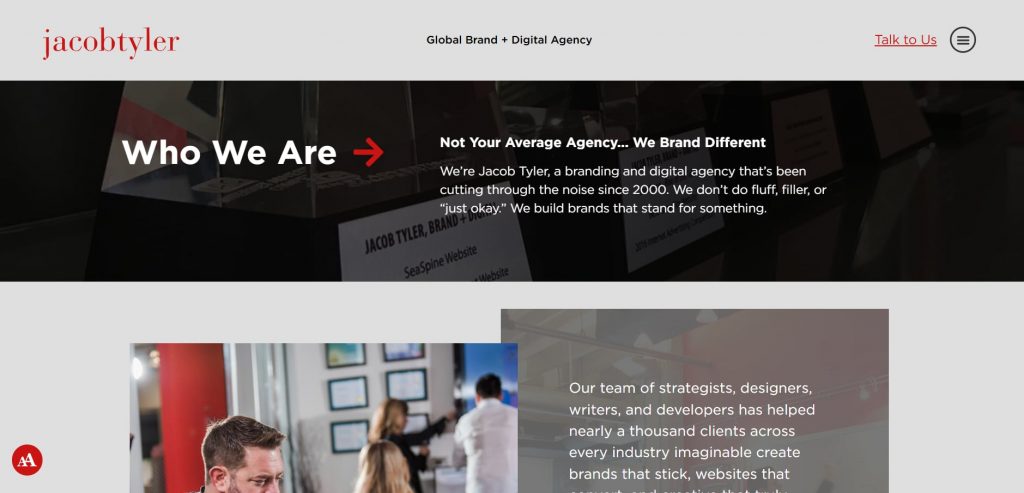
For nearly 20 years, Jacob Tyler has existed in the California Brand Design Agency game as a powerhouse. This full-service digital communications agency will trim the fat from your ultimate brand strategy to hone in on what you truly need moving forward.
If you’re looking for a major professional facelift with omni-channel marketing and integrated deep brand strategy, Jacob Tyler is a heavyweight brand—literally!—who’s worked with everyone from startups to credit unions!
Pros:
- Experience: Over 20 years of experience in the industry.
- Comprehensive: They can handle your entire marketing funnel, not just the design.
- Award-Winning: A strong portfolio of successful, high-profile campaigns.
Cons:
- Project Minimums: They typically work with project budgets starting at $10k+, which may price out smaller startups.
- Complexity: Their comprehensive approach might be overkill if you just need graphic design execution.
4. Micro1

Micro1 takes creative human design efforts and merges them with AI functionality. As a critical graphic design agency, they use artificial intelligence for beauty and brains on websites/apps like never seen before!
Micro1 builds engineering teams behind major apps (think Tinder, Uber…) so if you’re a tech-based startup in need of cutting edge product development based on extraordinary UX/UI look no further!
Pros:
- Tech-Forward: Ideal for SaaS and app-based companies.
- AI Integration: Uses AI to enhance efficiency and speed.
- Scalable: Great for ambitious startups looking to grow their engineering and design capabilities simultaneously.
Cons:
- Niche Focus: They are heavily focused on product and app development, rather than general marketing graphics.
- Development Heavy: If you don’t need coding or software engineering, their full suite of services might not apply to you.
Credit for Cover image: Photo by Mikael Blomkvist on Pexels

What’s the Best Design Agency in Austin for Businesses in 2026?

What’s the Best Design Agency in Jacksonville?
Die Logik hinter dem Zufall – Vulkan Vegas Casino analysiert
Wie Wildz Casino Zufall in messbare Chancen verwandelt
Play frank casino bonus code
Die Wissenschaft des klugen Spiels bei Wildz Casino
Richard casino sign up bonus

Top 10 Presentation Software To Use in 2026

Top 10 Video Marketing Agencies You Must Check Out in 2026

Top 10 Social Media Scheduler Apps to Automate Your Postings

How Marketing Optimization Tools Level Up Your Marketing Game

The Top 8 Webinar Platforms For Your Next Virtual Event or Demo

The Top CRM Platforms for Small Agencies & Service Businesses

What’s the Best Graphic Design Service for Ongoing Marketing?
Trending
- Uncategorized3 days ago
Logik, Zahlen und Strategie: Das Fundament im Vox Casino
- Uncategorized3 days ago
Richard casino sign up bonus
- Uncategorized3 days ago
Wild joker casino no deposit bonus codes
- Uncategorized3 days ago
King s casino live stream heute
- Uncategorized3 days ago
Locowin casino
- Uncategorized3 days ago
Princeali casino
- Uncategorized3 days ago
Verde casino registration bonus
- Uncategorized3 days ago
Ritzo casino
- Uncategorized3 days ago
Die Wissenschaft des klugen Spiels bei Wildz Casino
- Uncategorized3 days ago
Xrp casino coin
